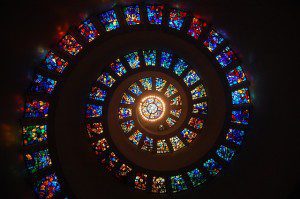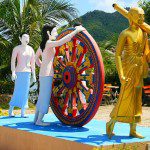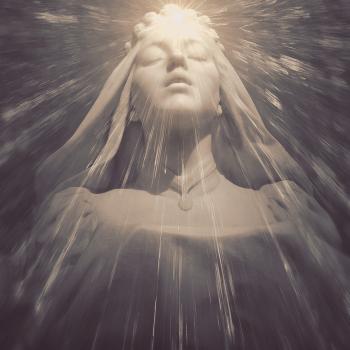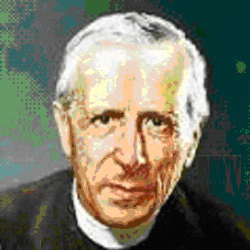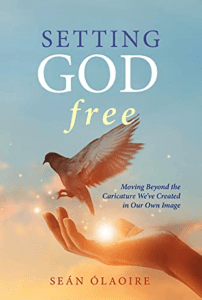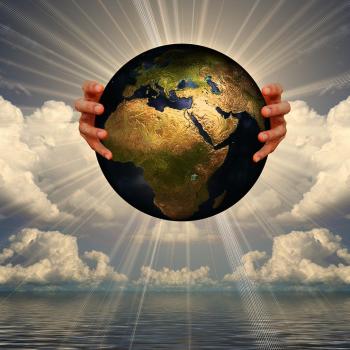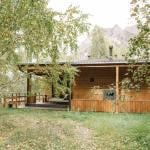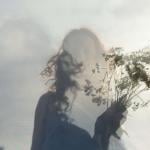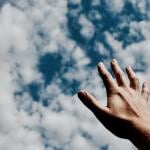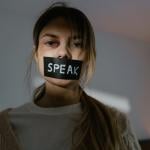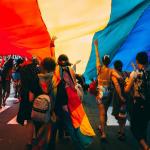What drives our urge to create? If we look to the creation story of Genesis, we find much more than a story about something that happened long ago in the darkest reaches of time and that set the cosmos in motion. We discover that to create is the single guiding principle of all that we are and all that we will ever become and experience. When we create, we somehow “know” that we are participating in the ultimate cosmic romance, “the eternal tango of love and life.”
Who creates?
In Genesis, Chapter 1, we see that God infuses all life with the power to create.
God creates.
Then God said, “Let there be light,” and there was light. God saw how good the light was.
The Earth creates.
Then God said, ”Let the earth bring forth vegetation: every kind of plant that bears seed and every kind of fruit tree on earth that bears fruit with its seed in it.
The plants and animals create.
God saw how good it was, and God blessed them saying, “Be fertile, multiply and fill the water of the seas; and let the birds multiply on the earth.
Man and Woman create.
God created man in his image;
In the divine image he created him;
Male and female he created them.
God blessed them, saying: “Be fertile and multiply; fill the earth.
God creates, the Earth creates, the plants and animals create, man and woman create. Everything is meant to grow, to blossom, to seed. It is our nature.
Why must one create?
The expression of one’s true creativity, in whatever form it takes, is unique and necessary. Martha Graham (1894-1991) writes:
“There is a vitality, a life force, an energy, a quickening that is translated through you into action, and because there is only one of you in all time, this expression is unique, and if you block it, it will never exist through any other medium; (it will) be lost. The world will not have it. It is not your business to determine how good it is, not how it compares with other expression. It is your business to keep it yours clearly and directly.
What does it mean to create? We associate the term creativity with artists, musicians, poets, writers, but any medium will do. We will say we are “inspired” – we have breathed in something different, which has somehow begun to dance within us, with some bit of who we are. And, in the dancing, we are lifted into something new, something bigger, and it bears the mark of our unique personal experience. Some people’s very lives are an exercise in creativity, as they continually stretch the possibilities – from the selection of a silk scarf to a ground-breaking mathematical equation.
Creativity and the silent exit of the ego
True creativity and ego cannot co-exist. The ego interrupts the creative process with its concerns. It doesn’t deal well with uncertainty. The ego needs to be fed and reassured with the hope of “success,” and tries to “rig the system” to make sure that success occurs. Some examples from the life of a visual artist might be:
- making measurements and comparisons to others’ work, to heroes and mentors, even to one’s other work considered more “successful”
- utilizing the brain in evaluation and decision-making
- questioning one’s “talent” or lack thereof
- succumbing to the temptation of repeating what one already understands and therefore can be successful at
- engaging in self-talk about one’s ability/legitimacy as an artist
- experiencing insecurity at times of low motivation
All these things could be running through the artist’s head, while he/she is simultaneously waiting, comfortably or uncomfortably, to catch the wind of creativity. Sometimes the methodical mixing of pigment, the repetitive brushstroke, the action of the wrist engages the whole body and works like a mantra and releases one’s openness and curiosity into discovery.
Releasing “you” from “you”
Over time, one engages the creative process with experience and knowledge; yet, in many ways, the creative process actually is a “free fall,” or a faithful leap, approached openhandedly with nothing beyond passion, curiosity, experience, and a unique way of seeing – which is, in fact, everything. Because we bring our whole selves – our storytelling, our own broken bits into the process – we can see that with which we are not engaging in life.
One loses “oneself” in the process, separating from the egoic “you” and engaging the ever-evolving personhood of “you” – moving from brain into mind. It is this willing, evolving personhood which engages in the creation of art, in the search for truth. And as author and illustrator Maurice Sendak reminds us, “Truthfulness to life – both fantasy life and factual life – is the basis of all great art.” (1964 Caldecott Medal Acceptance Speech)
Anaïs Nin (1903-1977) shares with us why she (and other writers) write.
We write, like Proust, to render all of it eternal,
and to persuade ourselves that it is eternal.
We write to be able to transcend our life, to reach beyond it. . .
When I don’t write, I feel my world shrinking.
I feel I am in a prison.
I feel I lose my fire and my color.
It should be a necessity, as the sea needs to heave, and I call it
Breathing.
Creativity is as necessary as breathing, creativity for the soul, breathing for the body. We inspire, we are inspired, we breathe in, we are “breathed in” by the “flow” of the creative process. We are caught up in the magical wind of creativity in which the ordinary laws of nature are suspended and time stands still.
Moments of transcendence
Graham goes on to say,
You have to keep open and aware directly to the urges that motivate you. Keep the channel open . . . There is no satisfaction whatever at any time. There is only a queer, divine dissatisfaction, a blessed unrest that keeps us marching and makes us more alive than the others. Great dancers are not great because of their technique, they are great because of their passion.
Though it is very difficult to elaborate on one’s state of mind in the “open channel” experience of which Graham speaks, there are some differences from ordinary “waking” consciousness that one might perceive.
- There is a timeless, in the moment quality to the experience, i.e. “I can’t believe it’s 5 o’clock already. I feel like I just started.
- There is an energized feel throughout the body – completely out of sync with the amount of time spent or physical energy expended. This energy is residual and can last for hours or days.
- There is a residual heightened response to color and texture in the environment
- It can be difficult to disengage from the work – continual rush of new ideas – “the divine dissatisfaction, a blessed unrest” of which Graham speaks.
- The experience renders us quietly “full,” joyful and peaceful and/or brimming over with enthusiasm for just about everything.
Why does that matter? Because these moments of grace, of inspiration, of transcending the needy earth- and time- bound concerns of our human nature are the essential way in which we experience the unbounded eternity and universal truth of our divine nature – and the seamless connection we have to all that ever has or will exist. The creative experience is both deep and relational. What emerges is totally original.
Conclusion
Maybe this is a foolish question – What makes such encounters “spiritual?” What is the quality of the inspiration at the intersection of creativity and spirituality? What makes these moments transcendent? Adding truth and beauty to the world is the result of each person uniquely aligning with creation and thereby steering all creation into alignment. So, returning to Genesis, we see that to create is both the journey out from Source, from God in the profundity and fecundity of Her manifestation, as well as the journey back to Source, to God in an alchemical crystallization of a single human experience.

